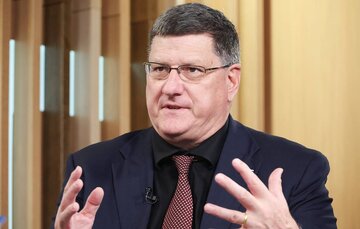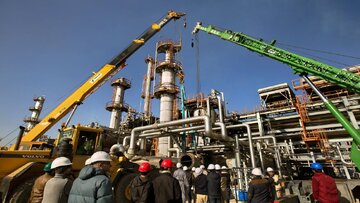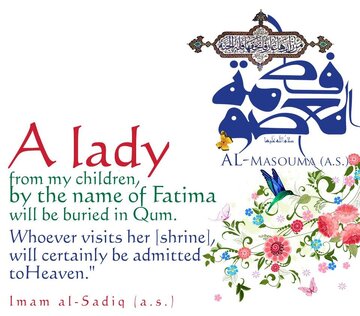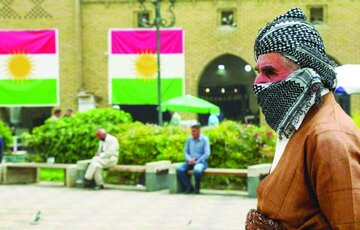AhlulBayt News Agency (ABNA): Since its establishment, the Islamic Republic of Iran has faced a myriad of assassinations that targeted many of its spiritual and political leaders, nevertheless, it succeeded in overcoming these hardships to this day.
One year has passed since the top Iranian nuclear scientist, Dr. Mohsen Fakhrizadeh, was assassinated in Tehran. It wasn’t the first assassination that the Islamic Republic witnessed since the triumph of its revolution in 1979. In fact, Iran’s revolutionary government managed to face and overcome a long series of plots and assassinations that targeted its most senior leaders and symbols. Here is an illumination from Iran’s contemporary history.
The first wave of assassinations happened soon after the return of Imam Khomeini (r) and the collapse of the Shah’s regime. The list of potential enemies of the new Islamic government that rose to power in 1979, who could be behind the horrible killings campaign, was very long indeed and included the US, “Israel” and other western and regional powers who didn’t want to see a victorious people’s revolution controlling such an important country like Iran. However, the executioner was basically local: the ferocious organization known as “Mujahideen Khalq” who had extremely authoritarian and brutal leadership. This stern organization was a hybrid of Iranian nationalism, socialist orientations with an Islamic face. "Mujahideen Khalq" tried to exploit the general chaos in the country to hijack the revolution, impose its vision and take the lion's share of the new Iran. But since it was not able to counter Imam Khomeini's overwhelming popularity, his charismatic personality, and his influence on the masses, the organization quickly reverted to bloody violence to achieve its goals. To that end, it embraced foreign interference with open arms and started cooperating with the revolution’s enemies, and established links to several secret intelligence apparatuses who were very active in Iran.
The first phase of the plot was a series of booby-traps, sporadic clashes, armed operations in certain areas, bus bombings, burning cars and motorcycles, killing government employees and pro-Khomeini merchants… armed violence that caused a state of extreme turmoil in Tehran in particular, and the country in general. Then, they moved to the most dangerous phase of the plot, which is the assassination of all the top cadre and leaders of the Islamic Republic on whom Imam Khomeini relies. Among the victims of this wave of assassinations in 1979 were Mortaza Motahari, head of the Revolution Command Council, Muhammad Qarni, the first Chief of Staff after the revolution, and Ayatollah Tabatabai. They continued and assassinated Ayatollah Sadoqi, the Juma’ Imam of Yazd, Ayatollah Dastgheeb, the Juma’ Imam of Shiraz, and Ayatollah Madani, the Juma’ Imam of Tabriz. A state of horror prevailed in the ranks of Imam Khomeini’s camp because of the extreme danger that surrounded them to the extent that Sheikh Hashemi Rafsanjani would not move around in Tehran unless he was lying in an ambulance in an attempt to hide (as he told the Egyptian journalist Fahmy Huwaidi).
" Mujahideen Khalq " continued its deadly activities throughout 1980, and by 1981 its operations peaked. On the 27th of June, an assassination attempt was carried out on Ayatollah Khamenei (the current Supreme Leader), who was then the representative of Imam Khomeini in the Supreme Defense Council, in addition to being the Juma’ Imam of Tehran. " Mujahideen Khalq " planted a bomb in the pulpit and detonated it while Sayed Ali Khamenei was delivering his sermon at the Abu Dhar Mosque in Tehran. Ayatollah Khamenei was taken to hospital in a state of extreme danger after suffering severe injuries, but he escaped death (though his right hand remained paralyzed until now from the effects of that explosion).
On the very next day, June 28, 1981, “Mujahideen Khalq” carried out its biggest operation. A real massacre among the top leaders and officials in the Islamic Republic's government. A massive explosion completely destroyed the headquarters of the Islamic Republican Party (Imam Khomeini had agreed to form it to compete in elections - as a political representation of the Islamic Revolution) during a meeting of its highest leadership. The most prominent target of the explosion was Ayatollah Muhammad Hussein Beheshti, who was considered one of the pillars of the revolution and the most influential man in Iran after Imam Khomeini, and he was the party leader and the head of the judiciary. The death toll from the bombing reached 73 important leaders. In addition to Ayatollah Beheshti, the list of victims included Muhammad Montazeri (one of the leaders and founders of the Revolutionary Guards and the son of Ayatollah Montazeri - the then deputy of Imam Khomeini), in addition to four ministers in the government (health, telecommunications, energy, and transportation), as well as 17 members of the Shura Council (Parliament). As for Sheikh Hashemi Rafsanjani, it was a matter of minutes between life and death! He left the building five minutes before the explosion due to a personal emergency and thus he survived. “Today the Khomeini regime is dead,” said Moussa Kheyabani, who was assigned the task of planning the operation by Massoud Rajavi (Mujahideen Khalq’s leader).
The expectations of “Mujahideen Khalq” were that it’s only a matter of time before the new regime collapsed, a few days, and the party will reap the fruits of their “struggle”. It is “a final blow and a stab in the heart of the regime that cannot recover from it” Kheyabani added in his report to Rajavi. But what really saved the regime and thwarted the efforts of “Mujahideen Khalq” was Imam Khomeini, with his enormous personality and overwhelming presence among the masses who responded to his call and went out in millions to mourn the victims of the bombing, in a clear message to Rajavi and his group that the Iranian population will not leave Imam Khomeini alone.
"Mujahideen Khalq" continued its bloody course of action, and soon followed with another operation no less fierce. This time the target was the President of the Republic, who was newly elected to the position, Muhammad Ali Raja’ei. The President was attending a meeting at the Prime Ministry headquarters for the Supreme Defense Council when a bomb exploded, killing another group of high-ranking leaders in the revolution’s government: President Muhammad Ali Raja’ei, and with him Prime Minister Muhammad Javad Bahner, in addition to the Chief of Police of the Islamic Republic, Colonel Waheed Dastjerdi. They were the most prominent victims of the new blast.
Despite these losses, casualties, and blood, the government of the Islamic Revolution succeeded in overcoming grave threats and breaking out of the bottleneck. As of 1982 " Mujahedeen Khalq" was greatly weakened, and its elements and leaders began to flee outside Iran after the Revolutionary Guards and the new security services became stronger. Imam Khomeini now had a force that strikes with an iron fist if necessary. “Mujahideen Khalq” was defeated, but at a very high cost.
The assassinations did not stop after that, they continued but the nature and objectives of the operations changed. The targeting started coming from external parties and was mostly directed at scientific and technical cadres or high-ranking military and security figures.
Between 2010 and 2012, four senior scientists of the Iranian nuclear program and university professors were assassinated, and all suspicions pointed to the Israeli Mossad, which could possibly have been using old/new elements from "Mujahideen Khalq" or other enemies of the regime. Until we reached the Year 2020, which began with the assassination of the great symbol of Iran, Qassem Soleimani, and ended with the assassination of Mohsen Fakhrizadeh, the father of the nuclear program.
By targeting Fkhrizadeh the assassins wanted, apparently, to impede Iran’s nuclear program by killing its head and most significant figure who was highly regarded by Iran’s top leadership.
Like what happened in the past, the same things will happen now and tomorrow: Iran's military and technological capabilities will not be affected. The huge scientific, technological, and strategic programs in Iran operate institutionally. The Zionist entity knows this, but it strikes as a matter of self-affirmation, intending to demoralize and intimidate those who can be intimidated from among Iran's scholars and officials.
“Israel” will not succeed in its endeavor. Every martyr who falls in Iran reminds its people of the historic injustice done to them by tyrants and oppressors and increases their support for their regime. And let's not forget that martyrdom is at the heart of the Iranian people's soul and conscience, from Imam Hussein bin Ali to… Mohsen Fakhrizadeh!
The opinions mentioned in this article do not necessarily reflect the opinion of ABNA24, but rather express the opinion of its writer exclusively.
Hussam AbdelKareem
Writer from Jordan
/129
28 November 2021 - 08:14
News ID: 1202928
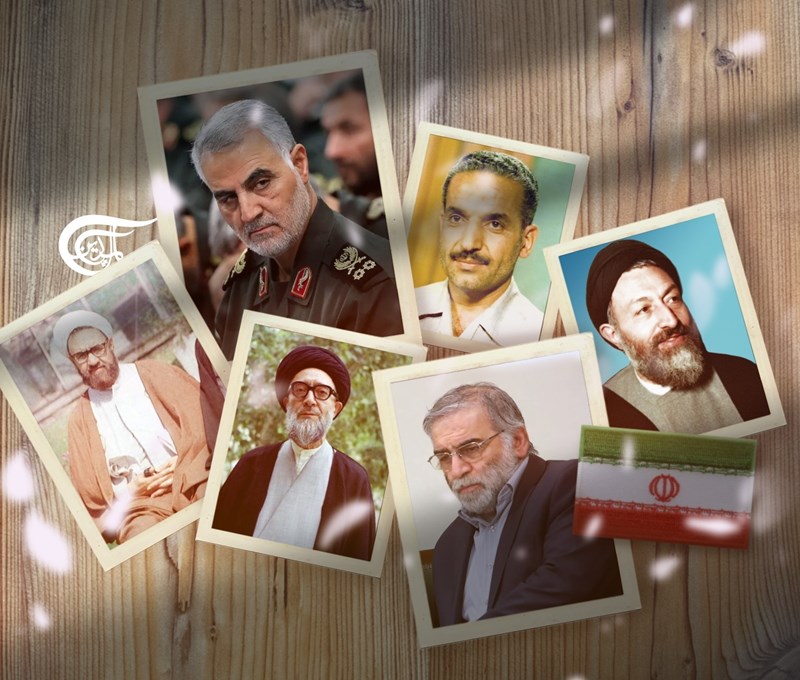
“Israel” will not succeed in its endeavor. Every martyr who falls in Iran reminds its people of the historic injustice done to them by tyrants and oppressors and increases their support for their regime. And let's not forget that martyrdom is at the heart of the Iranian people's soul and conscience, from Imam Hussein bin Ali to… Mohsen Fakhrizadeh!

